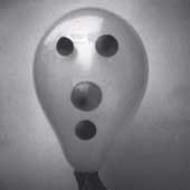

















Welcome to my few pages dedicated to electronic music, otherwise known as techno. First of all, before we go anyfurther, let me clarify what electronic music is. Electronic music is music that is made with... hmmmm....electronics.
These include drum machines, synthesizers, computers, or anything elese that can produce music, be digitally manipulated,
and recorded. Many people classify this kind of music as techno when techno is actually a genre of electronic music (more
on that later). If you like electronic, good for you. I do too. If you don't the purpose of this site is to educate you
about what electronic music is and how it came to be.
It started a long time ago, in the 1860's. Electronic music can be traced back to the audio analytical work ofHermann Ludwig Ferdinand von Helmholtz the German physicist, mathematician and author. Helmholtz built an electronically
controlled instrument to analyze combinations of tones the "Helmholtz Resonator", using electromagnetically vibrating metal
tines and glass or metal resonating spheres the machine could be used for analyzing the tones that create complex natural
sounds. He was concerned with the scientific analysis of sound and had no interest in direct musical applications.
The first electronic instruments were built from 1870 to 1915 and used a variety of techniques to generate sound.The tone wheel used a rotating metal disk in a magnetic field causing variations in an electrical signal and electronic
sparks caused direct fluctuations in the air.
Then, in 1906, Lee De Forest patented the first Vacuum tube or triode. The Vacuum tube's main use was in radiotechnology but De Forest discovered that it was possible to produce audible sounds from the tubes. In 1915 De Forest created
a musical instrument, the "Audion Piano”. The Vacuum tube was to remain the primary type of audio synthesis until the
invention of the integrated circuit in the 1960's. Integrated Circuits were inspired by the writings of the German's Harald Bode, Robert Moog, and Donald Buchla. The integrated circuits created a new generation of easy to use and reliable electronic instruments.
<--- Moog's Integrated Circuit Synthesizer
The current types of electronic instruments started with the digital synthesizers of the 1980s. These synthesizers were software controlled offering control over various forms of synthesis previously only available on extremely expensive studio synthesizers. Early models included the Yamaha DX range and the Casio CZ synthesizers. In 1971, the first portable pre-wired synthesizer was invented. It was not necessary to plug in modules to get a sound, but it had no memory.In 1975, the Oberhiem Sem enabled a musician to play 2, 4, 6 or 8 notes at the same time, depending on the models. One synthesizer was necessary for each note and was connected through the Expander Module. At this time the first machines with memories emerged, but each module could only store a couple of parameters.Then, in 1978 the first fully programmable, polyphonic synthesizers were produced. These devices were capable of producing 5 tones at once and had 32 memory slots to record synthesizer parameters for using during performances. In 1982, the bass synthesizer came about because of the gaining popularity of Electronic Music. The Roland - TB 303 helped to produce new sounds for a new era in music. Also in 1982 then first MIDI synthesizer was released. These synthesizers were the first to combine digital wave shapes which are essentially basic sounds with subtractive analog synthesis treatments. The ancestors of the samples used in the original synthesizers could be transformed to produce an infinite array of sounds.In 1995 editing electronic music became much easier. The Nord Lead keyboard marked the return of subtractive synthesis. The process is like the analogical synthesizers but digitally modelized. This keyboard provided the return of the front buttons which was long awaited by a new generation of musicians. In 2000, the Storm Music Studio offered software synthesis at its best and provided a wide variety of instruments. Today there are several different computer programs that can create and record electronic music. You can connect and instrument imaginable to a computer, record a sound, alter it, and then edit it to fit a track. The possibilities of electronic music are endless.
Genres...
There are many different kinds of styles of electronic music. Many people classify electronic music as “techno,” when in fact techno is just one genre of many different genres of electronic music. Other genres of electronic music include: Acid, Acid Jazz, Ambient, Club, Dark Rave, Dark Trance, Dub, Ambient, Club, Dark Rave, Dark Trance, Dub, Detroit, Dolphin, Down tempo, Electro, Euro-dance, Euro-rave, Gabber(gabba), Garage, Goa Trance,Happy Hardcore, Hardcore, Handbag House, Handbag, Jungle, Hardbag, Hardstepper, Hard Trance, House, Jungle, Minimal, Nu-Energy, Progressive House, Punkcore, Rave, RaveCore, Speed Garage, Techstep, Trance, Tribal, and Trip Hop. Click here to learn about two of my favorite electronic music artists, underworld and rabbit in the moon.